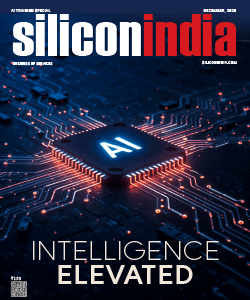How UPI is Draining Holiday Wallets with 'Buy Now, Pay Later' Loans

- Hidden Debt: UPI + BNPL tempt shoppers, leading to unseen financial stress.
- AI Traps: Algorithms push impulsive spending, affecting even careful users.
- Stay in Control: Track spending, set limits, and plan repayments.
As virtual and real crowds converge on the lure of discounts too good to resist, these items increase the urge to spend money, and participants are often trapped in a cesspool of outstanding debts, reverberating long into the future once the celebrations are long over. This has been termed the Buy Now, Pay Later syndrome and it indicates how convenient it can be transformed into a curse, calling out a closer look at its workings and effects.
The Festive Frenzy of Digital Spending
![]()
When the sales are high, online sales go booming. The urgency of UPI and the installment plans of BNPL make a tempting duo, the immediate possession of the goods and the reassuring delusion of affordable prices. Whether it is electronics, fashion or daily needs, customers are in a wave of limited time offers that have been known to go beyond their pre-established budgets.
This is particularly in the case of the younger consumers who are mostly going through the first independent financial cycle. Even a light upgrade of a device or a food delivery that a person buys as BNPL on the spur of the moment can silently become a big business, becoming in the middle of the celebrations a kind of financial stress.
What sets this wave apart is its democratic appeal, it reaches all demographics, yet the tech-savvy youth are most vulnerable. With minimal friction and maximum temptation, small indulgences quickly compound, creating a hidden web of debt that remains largely invisible until repayment deadlines loom.
The Invisible Hands of AI
![]()
At the heart of this invisible force lies artificial intelligence. Sophisticated algorithms dissect spending patterns, browsing habits, and even location data, crafting personalized loan and offer suggestions with uncanny precision. Checkout screens are an ideal battleground, and they will offer the BNPL propositions at the most vulnerable time. The temptation of zero-interest rates and deferrals that are flexible so that the cost is eventually compensated makes the temptation irresistible, and invites overspending.
Even disciplined shoppers are not immune. Data-driven nudges through notifications, emails, and in-app alerts chip away at financial restraint. The process feels natural, almost serendipitous, but it systematically drives consumption beyond original intentions, transforming users into unwitting participants in their own overextension.
The Silent Fallout of BNPL Spending
![]()
Once the holiday glow dims, the consequences manifest. Late payment triggers late fees, broken due dates lead to a cascading effect and the psychological burden accumulates. Fear of payments, the abrupt deprivation of the normal life, the broken routine is implemented as the new standard of many people.
To make the situation worse, a significant number of BNPL deals are not subject to credit reporting. Users can look at their scores and be feeling safe, oblivious of accruing, unreported debts. The truth of the seemingly harmless festal excesses comes to bear when big loans or unexpected bills come along and the actual cost of such seemingly harmless pleasures is revealed.
The fast adaptation of UPI and BNPL also creates an opportunity to evil players. Phishing attacks, fraudulent transactions, and counterfeit loans increase in high sale times and take advantage of the fast and simple process associated with online purchases. Fraudsters lie in wait, they usually transform the season of joy to financial terrors.
The level of fintech innovation is forcing regulators to tighten their verification procedures and disclosure standards, yet the intensity of innovation necessitates ongoing adjustment. The proposals including universal credit evaluations, combined debt tracking, and cumulative borrowing limits are under discussion, but they can have a significant effect only in case of rapid, large-scale adoption.
Also Read: The Marketing Dramas of Flipkart's BBD and Amazon's GIF in 2025
Smart Strategies for Stress-Free Spending
![]()
Despite these risks, consumers are not powerless. Awareness and vigilance are the best defenses against the digital specter of overspending.
Practical strategies include:
Tracking all transactions: Digital tools or simple logs can illuminate the full scope of UPI and BNPL engagements.
Setting spending boundaries: Predefined ceilings for festive shopping prevent impulsive, unplanned purchases.
Careful scrutiny of loan terms: Understanding interest rates after introductory periods and data policies avoids hidden traps.
Timely repayments: Alerts and automation protect against late fees and preserve financial stability.
Emergency reserves: Preparing for post-festive financial shocks ensures flexibility and peace of mind.
By adopting these measures, consumers regain control, transforming from passive participants to informed decision-makers. Festive shopping then becomes a source of genuine enjoyment rather than lingering regret.
Conclusion!
In a world where technology is both enabler and enchanter, the true magic lies in awareness. The knowledge of the mechanics of UPI and BNPL, the expectation of their temptations, and the active measure will allow users to have a nice time in the digital marketplace, without being caught in the malevolent phantoms of it. It is not only about what we shop during a holiday the future of the shopping process is about how we can use wisely the invisible forces involved.
Read More News :
Amazon MX Player Launches 'Bharat Ke Super Founders' With Rs 100 Crore Fund
Fujifilm India Unveils Brand Film on Tech-Enabled Healthcare in Remote Spiti


.jpg)
.jpg)

